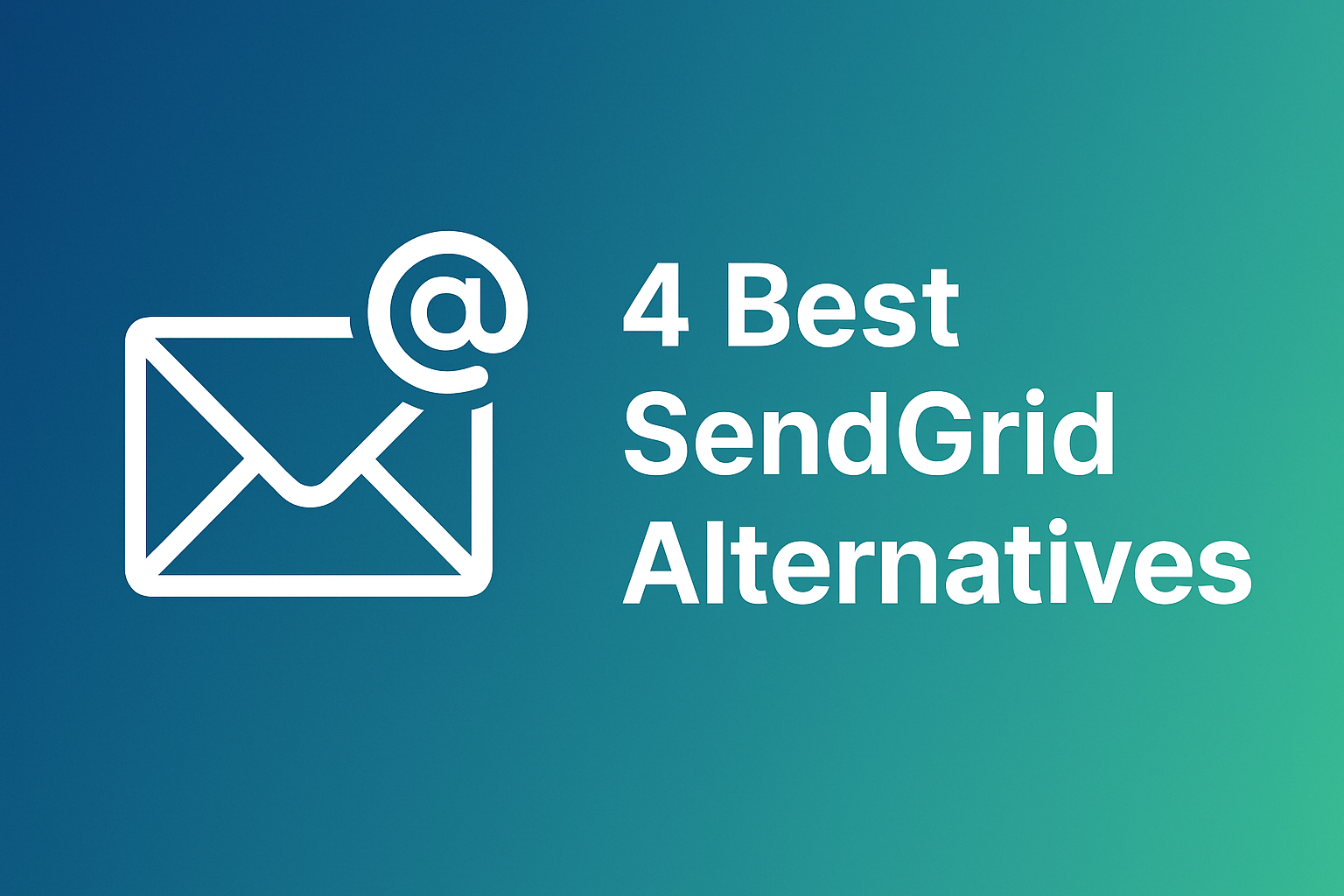Email marketers wrestle with a fundamental challenge: balancing subscriber growth with deliverability. The solution often lies in understanding double opt-in mechanisms and their impact on both compliance and engagement metrics.
Double opt-in represents a two-step verification process where subscribers confirm their email addresses after initial signup. This mechanism has become a cornerstone of modern email marketing, affecting everything from sender reputation to GDPR compliance.
Table of contents
- What is double opt-in
- Single opt-in vs double opt-in comparison
- Technical implementation of double opt-in
- Legal compliance requirements
- Impact on deliverability and sender reputation
- Best practices for confirmation emails
- Testing and optimization strategies
- Common implementation challenges
- Analytics and measurement
- Industry-specific considerations
- Future trends and recommendations
What is double opt-in
Double opt-in creates a two-stage subscription process. A user fills out a signup form, then receives a confirmation email containing a verification link. Only after clicking this link does the subscriber officially join the mailing list.
This process differs significantly from single opt-in, where form submission immediately adds the contact to your database. The extra step might seem cumbersome, but it serves multiple purposes in email marketing operations.
The confirmation email acts as a gatekeeper. It prevents bot submissions, reduces typos in email addresses, and confirms genuine interest from subscribers. Many email service providers now recommend or require double opt-in for specific use cases.
The mechanics behind double opt-in
When someone submits a signup form with double opt-in enabled, several technical processes occur:
- Form data gets stored in a pending state
- A unique confirmation token generates automatically
- The confirmation email sends with the verification link
- User data remains unconfirmed until link activation
- Link clicks trigger subscriber activation and list addition
This workflow creates multiple touchpoints for data validation and user verification. Each step provides opportunities to catch errors, prevent spam, and confirm subscriber intent.
Single opt-in vs double opt-in comparison
The choice between single and double opt-in affects subscriber quality, list growth rates, and compliance requirements. Each method offers distinct advantages and challenges for email marketers.
| Aspect | Single opt-in | Double opt-in |
|---|---|---|
| Signup friction | Minimal | Higher |
| List growth speed | Faster | Slower |
| Subscriber quality | Variable | Higher |
| Spam risk | Higher | Lower |
| Deliverability impact | Potentially negative | Generally positive |
| Compliance coverage | Limited | Comprehensive |
Single opt-in characteristics
Single opt-in maximizes conversion rates from signup forms. Users complete one action and immediately join your list. This approach works well for lead magnets, webinar registrations, and time-sensitive campaigns.
But single opt-in carries risks. Typos in email addresses create hard bounces. Bot submissions inflate list sizes without adding value. Some users forget they signed up, leading to spam complaints later.
The lack of verification also creates compliance gaps in certain jurisdictions. GDPR and similar regulations often require explicit consent verification, which single opt-in cannot provide definitively.
Double opt-in advantages
Double opt-in addresses many single opt-in limitations. Email addresses get verified before list addition, reducing bounce rates significantly. Subscribers demonstrate clear intent by completing two actions, indicating higher engagement potential.
The confirmation step also creates a paper trail for compliance purposes. Email service providers can track both signup and confirmation timestamps, providing evidence of explicit consent when needed.
Spam complaints typically decrease with double opt-in lists. Subscribers remember the confirmation process and understand how they joined your list. This memory reduces unsubscribe friction and complaint rates.
However, double opt-in does reduce overall signup conversion rates. Studies show 10-25% of initial signups never complete the confirmation step. This attrition varies by industry, audience, and implementation quality.
Technical implementation of double opt-in
Implementing double opt-in requires careful attention to user experience, technical reliability, and compliance requirements. The process involves multiple components working together seamlessly.
Proper DNS records are essential for double opt-in deliverability. Learn more in our DNS Email Records technical guide.
Confirmation email design
The confirmation email represents the critical conversion point in double opt-in workflows. Design choices here directly impact completion rates and subscriber quality.
Subject lines should clearly indicate the confirmation requirement. Phrases like "Please confirm your subscription" or "Activate your account" set appropriate expectations. Avoid misleading or promotional subject lines that might confuse subscribers.
Email content must explain the confirmation purpose clearly. Include the original signup context (where they signed up, what they'll receive) to refresh subscriber memory. Make the confirmation button prominent and action-oriented.
Technical requirements include:
- Unique confirmation tokens for security
- Token expiration to prevent abuse
- Mobile-friendly design for multi-device access
- Clear branding to establish trust
- Fallback text links for button accessibility
Confirmation page optimization
After clicking the confirmation link, subscribers should land on a clear success page. This page serves multiple functions beyond confirmation acknowledgment.
Thank subscribers for confirming and set expectations about future emails. Include frequency information, content types, and unsubscribe instructions. Consider offering preference center access for customization options.
Use this page for additional engagement opportunities. Link to recent blog posts, social media profiles, or premium content offers. Some marketers include welcome sequences or immediate value delivery here.
Technical considerations include:
- Fast loading times for mobile users
- Clear visual confirmation of successful subscription
- Integration with analytics for tracking
- Error handling for expired or invalid tokens
- SEO optimization if pages might get indexed
Database and workflow management
Double opt-in requires sophisticated database management to handle pending subscriptions effectively. Subscribers exist in multiple states throughout the confirmation process.
Pending subscribers need separate handling from confirmed subscribers. They shouldn't receive regular broadcasts but may need confirmation reminders. Database architecture should accommodate these different states clearly.
Workflow automation becomes critical for managing the confirmation sequence. Set up reminder emails for unconfirmed subscribers, typically sent 24-48 hours after initial signup. Some marketers send multiple reminders over several days.
Consider implementing:
- Automated confirmation reminder sequences
- Expiration policies for unconfirmed subscriptions
- Re-confirmation options for expired tokens
- Integration with customer support systems
- Backup procedures for technical failures
Legal compliance requirements
Double opt-in helps satisfy legal requirements across multiple jurisdictions, but implementation details matter significantly for compliance effectiveness.
For a detailed breakdown of U.S. email laws, see our guide to CAN-SPAM Act compliance. Learn how to create privacy policies that support double opt-in and GDPR compliance in our email privacy policy guide.
GDPR compliance
The General Data Protection Regulation requires explicit consent for email marketing. Double opt-in provides stronger evidence of explicit consent compared to single opt-in methods.
GDPR compliance requires documenting:
- When consent was given
- How consent was obtained
- What the person consented to
- Evidence of the consent action
Double opt-in workflows naturally create this documentation trail. Confirmation emails prove explicit consent, and server logs provide timestamp evidence. This documentation becomes valuable during compliance audits or subscriber disputes.
But double opt-in alone doesn't guarantee GDPR compliance. The initial signup form must still include clear consent language, privacy policy links, and purpose statements. Pre-checked boxes remain prohibited regardless of confirmation steps.
CAN-SPAM Act considerations
The CAN-SPAM Act focuses on email content and sender identification rather than consent mechanisms. Double opt-in doesn't directly address CAN-SPAM requirements but can improve compliance indirectly.
Confirmed subscribers typically generate fewer spam complaints, reducing enforcement risk. The confirmation process also creates opportunities to reinforce sender identification and expectation setting, both CAN-SPAM requirements.
Key CAN-SPAM elements to maintain include:
- Accurate sender information in all emails
- Clear subject lines reflecting email content
- Prominent unsubscribe mechanisms
- Physical address disclosure
- Honor unsubscribe requests promptly
International compliance variations
Different countries maintain varying email marketing regulations. Double opt-in provides flexibility to meet multiple requirements simultaneously, but specific implementation details may need adjustment.
Canada's CASL requires explicit consent for commercial emails. Double opt-in satisfies this requirement when properly implemented with clear consent language and purpose statements.
Australia's Spam Act permits both express and inferred consent. Double opt-in clearly establishes express consent, providing stronger legal protection than relying on inferred consent interpretations.
Consider consulting legal counsel for specific jurisdictional requirements, especially when operating internationally or targeting specific regulatory environments.
Impact on deliverability and sender reputation
Double opt-in significantly affects email deliverability through multiple mechanisms. Understanding these impacts helps optimize overall email performance beyond simple compliance benefits.
See more deliverability strategies in our email delivery best practices guide. Read our tips for keeping your emails out of spam folders in How to Prevent Your Emails from Going to Junk Folders.
Bounce rate reduction
Email address verification through double opt-in dramatically reduces hard bounce rates. Typos and fake addresses get filtered out before joining confirmed subscriber lists.
Hard bounces damage sender reputation with internet service providers (ISPs). High bounce rates signal poor list hygiene and potentially questionable acquisition practices. ISPs may throttle or block emails from senders with consistent bounce problems.
Double opt-in typically reduces bounce rates to below 2%, compared to 5-10% or higher for single opt-in lists. This improvement alone can significantly boost deliverability rates and inbox placement.
Engagement metric improvements
Confirmed subscribers generally demonstrate higher engagement rates across key metrics. Open rates, click-through rates, and conversion rates typically exceed single opt-in list performance.
Higher engagement signals positive subscriber relationships to ISPs. Gmail, Yahoo, and other providers use engagement metrics to determine inbox placement. Lists with strong engagement patterns receive preferential treatment in filtering algorithms.
Specific improvements commonly observed include:
- 15-30% higher open rates
- 20-40% higher click-through rates
- Reduced unsubscribe rates
- Lower spam complaint rates
- Increased purchase conversion rates
Spam complaint management
Spam complaints represent one of the most damaging factors for sender reputation. Double opt-in significantly reduces complaint rates through improved subscriber education and intent verification.
The confirmation process reminds subscribers how they joined your list. This memory reduces confusion and frustration that often leads to spam complaints instead of unsubscribe actions.
ISPs track complaint rates closely, with thresholds typically around 0.1% for bulk senders. Exceeding these thresholds can result in delivery blocks or permanent blacklisting. Double opt-in helps maintain complaint rates well below these danger zones.
List hygiene automation
Double opt-in creates natural list cleaning mechanisms that improve long-term deliverability. Invalid addresses never reach your confirmed list, and disengaged prospects self-select out during confirmation.
This automatic filtering reduces the need for aggressive list cleaning campaigns later. Your confirmed list maintains higher quality over time, requiring less manual intervention for deliverability maintenance.
Combined with regular engagement-based cleaning, double opt-in lists often achieve superior deliverability performance with lower maintenance overhead compared to single opt-in alternatives.
Best practices for confirmation emails
Confirmation email design and content directly impact double opt-in completion rates. Small optimizations can significantly improve subscriber conversion and list quality.
Subject line optimization
Confirmation email subject lines balance clarity with urgency. Subscribers need to understand the email purpose immediately while feeling motivated to complete the action.
Effective subject line patterns include:
- "Please confirm your [Brand Name] subscription"
- "One click to activate your account"
- "Complete your signup for [Specific Benefit]"
- "Verify your email address for [Company Name]"
Avoid promotional language that might trigger spam filters or confuse subscribers. Generic subjects like "Confirmation required" lack context and may reduce open rates.
Test different subject line approaches with your audience. B2B subscribers might respond better to formal language, while B2C audiences may prefer more casual or benefit-focused messaging.
Content structure and messaging
Confirmation email content should immediately explain the required action and provide context about the original signup. Subscribers may have signed up days ago and forgotten the details.
Include these essential elements:
- Clear explanation of why they're receiving this email
- Reminder of where/when they signed up
- Prominent confirmation button or link
- Information about what they'll receive after confirming
- Alternative text link for accessibility
- Contact information for questions
Keep content concise but informative. Long explanations may overwhelm mobile users, while insufficient context creates confusion and reduces completion rates.
Visual design considerations
Confirmation emails should prioritize functionality over elaborate design. The primary goal is action completion, not brand showcase or content consumption.
Design priorities include:
- Large, prominent confirmation button
- High contrast for button visibility
- Mobile-responsive layout
- Fast loading times
- Minimal distractions from main action
- Clear visual hierarchy
Consider using simpler designs for confirmation emails compared to regular newsletters. Elaborate designs may distract from the confirmation action or trigger spam filtering.
Timing and follow-up sequences
Send confirmation emails immediately after signup to maintain momentum and context. Delays reduce completion rates as subscribers lose interest or forget their signup intent.
Implement follow-up sequences for unconfirmed subscribers:
- First reminder: 24 hours after signup
- Second reminder: 72 hours after signup
- Final reminder: 7 days after signup
Each reminder should maintain the same clear messaging while possibly adding urgency or additional context. Some marketers include subscriber benefits or testimonials in later reminders.
After the final reminder, remove unconfirmed subscribers from your database. Keeping expired signups creates data bloat without providing marketing value.
Testing and optimization strategies
Double opt-in implementation benefits from systematic testing and optimization. Small improvements in confirmation rates can significantly impact overall list growth and quality.
A/B testing confirmation elements
Test confirmation email elements systematically to identify optimization opportunities. Focus on elements that directly impact completion rates rather than vanity metrics.
High-impact testing areas include:
- Subject lines for open rate optimization
- Button text and design for click-through rates
- Email content length and structure
- Send timing relative to initial signup
- Follow-up sequence timing and frequency
Run tests with sufficient sample sizes to achieve statistical significance. Confirmation email volumes are typically lower than regular campaigns, so longer testing periods may be necessary.
Conversion rate optimization
Track confirmation completion rates as a key performance indicator. Industry benchmarks vary, but completion rates between 75-85% are generally considered good for most sectors.
Factors affecting completion rates include:
- Source quality of initial signups
- Time delay between signup and confirmation
- Email deliverability to confirmation addresses
- Mobile optimization of confirmation experience
- Clarity of confirmation instructions
Analyze completion rates by traffic source to identify quality variations. Social media signups might have different completion patterns compared to website form submissions or paid advertising leads.
User experience testing
Conduct user testing on the complete double opt-in experience. Have real users complete the signup and confirmation process while providing feedback on pain points or confusion areas.
Common user experience issues include:
- Confirmation emails landing in spam folders
- Mobile display problems with confirmation buttons
- Unclear instructions or missing context
- Technical errors during confirmation process
- Slow loading times on confirmation pages
Address these issues systematically to improve overall completion rates and subscriber satisfaction with the onboarding experience.
Common implementation challenges
Double opt-in implementation presents several technical and operational challenges that require careful planning and execution.
Deliverability of confirmation emails
Confirmation emails must reach subscriber inboxes reliably, but they often face unique deliverability challenges. These emails go to unverified addresses that may have higher spam risk factors.
Common deliverability issues include:
- New email addresses with no engagement history
- Potential typos creating invalid addresses
- Aggressive spam filtering of automated emails
- Authentication problems with confirmation domains
- IP reputation issues for high-volume senders
Improve confirmation email deliverability through:
- Dedicated IP addresses for confirmation emails
- Proper SPF, DKIM, and DMARC authentication
- Warm-up procedures for new sending infrastructure
- Content optimization to avoid spam triggers
- Monitoring of confirmation email performance metrics
Mobile optimization challenges
Mobile devices account for significant portions of email opens, making mobile optimization critical for confirmation email success. Mobile users face unique challenges in completing confirmation actions.
Mobile-specific considerations include:
- Button sizing for touch interfaces
- Fast loading times on slower connections
- Simplified layouts for small screens
- Easy access to confirmation links
- Offline handling for poor connectivity
Test confirmation emails across multiple mobile email clients and operating systems. What works in desktop Gmail may fail in mobile Apple Mail or Android clients.
Technical integration complexity
Double opt-in requires integration between multiple systems: signup forms, email platforms, databases, and analytics tools. Complex integrations create multiple failure points.
Common integration challenges include:
- API reliability between platforms
- Data synchronization delays
- Error handling for failed confirmations
- Duplicate prevention mechanisms
- Analytics tracking across systems
Implement robust error logging and monitoring to identify integration problems quickly. Have backup procedures for manual handling when automated systems fail.
Compliance documentation
Maintaining compliance documentation for double opt-in requires systematic record-keeping. Legal requirements may specify retention periods and documentation formats.
Document these elements for each subscriber:
- Original signup timestamp and source
- IP address and user agent information
- Confirmation email send timestamp
- Confirmation click timestamp and IP
- Any subsequent consent modifications
Store this information securely with appropriate access controls. Consider legal requirements for data retention and deletion when subscribers request removal.
Analytics and measurement
Measuring double opt-in performance requires tracking multiple metrics across the confirmation funnel. Standard email metrics alone don't provide complete visibility into double opt-in effectiveness.
Key performance indicators
Track these essential metrics for double opt-in assessment:
Confirmation funnel metrics:
- Initial signup conversion rate
- Confirmation email delivery rate
- Confirmation email open rate
- Confirmation completion rate
- Overall signup-to-subscriber conversion rate
List quality indicators:
- Bounce rate for confirmed subscribers
- Engagement rates by confirmation time
- Unsubscribe rates within first 30 days
- Spam complaint rates
- Long-term subscriber lifetime value
Compliance metrics:
- Documentation completion rate
- Consent renewal rates for existing subscribers
- Data processing request volumes
- Compliance audit preparation time
Segmentation and analysis
Segment double opt-in performance by various factors to identify optimization opportunities and understand subscriber behavior patterns.
Useful segmentation dimensions include:
- Traffic source (organic, paid, social, referral)
- Device type (mobile, desktop, tablet)
- Geographic location and time zone
- Industry or demographic characteristics
- Confirmation completion timing
Analyze performance variations across segments to optimize signup experiences for different user groups. Mobile users might need different confirmation email designs compared to desktop users.
Reporting and insights
Create regular reporting on double opt-in performance for stakeholders. Include both operational metrics and business impact measurements.
Monthly reporting should cover:
- Confirmation rate trends and variations
- List growth and quality comparisons
- Deliverability impact measurements
- Compliance status and documentation
- Revenue attribution to confirmed subscribers
Use this data to justify double opt-in investments and identify areas for continuous improvement in subscriber acquisition processes.
Industry-specific considerations
Different industries face unique challenges and opportunities with double opt-in implementation. Regulatory requirements, audience expectations, and business models all influence optimal approaches.
E-commerce and retail
E-commerce businesses often struggle with double opt-in because of concerns about conversion rate impact. Customers making purchases expect immediate access to order confirmations and shipping updates.
Consider hybrid approaches for e-commerce:
- Single opt-in for transactional emails
- Double opt-in for promotional email lists
- Post-purchase confirmation for marketing emails
- Preference centers for granular consent management
B2C retail audiences typically accept double opt-in more readily when benefits are clearly communicated. Offer immediate value like discount codes or exclusive content to motivate confirmation completion.
B2B and professional services
B2B audiences often have higher double opt-in completion rates due to professional email habits and clearer business value propositions. Professional users understand email verification importance and are more likely to complete confirmation steps.
B2B considerations include:
- Corporate email filters may block confirmation emails
- Decision makers may delegate email management
- Longer sales cycles require sustained engagement
- Compliance requirements may be more stringent
Consider account-based approaches where multiple contacts from the same organization can be managed collectively while maintaining individual consent records.
Healthcare and finance
Regulated industries like healthcare and finance face stricter compliance requirements that make double opt-in particularly valuable. These sectors benefit from the additional consent documentation and verification.
Industry-specific requirements include:
- Enhanced privacy protection standards
- Detailed audit trail requirements
- Stricter data retention policies
- Additional authentication requirements
Work with legal counsel to ensure double opt-in implementation meets industry-specific regulatory requirements beyond general email marketing laws.
Future trends and recommendations
Email marketing continues evolving, and double opt-in practices must adapt to new technologies, regulations, and user expectations.
Emerging privacy regulations
Privacy regulations continue expanding globally, with new laws in various jurisdictions requiring explicit consent verification. Double opt-in provides foundation for meeting these evolving requirements.
Prepare for future compliance by:
- Implementing granular consent management
- Documenting consent purposes clearly
- Building flexible consent renewal processes
- Maintaining detailed audit trails
- Planning for cross-border data transfer requirements
Technology integration advances
Email platforms increasingly integrate with broader marketing technology stacks, creating opportunities for more sophisticated double opt-in workflows.
Emerging integration opportunities include:
- CRM synchronization for lead scoring
- Marketing automation trigger campaigns
- Customer data platform unification
- AI-powered optimization engines
- Cross-channel consent management
User experience innovations
Double opt-in user experiences continue improving through design innovations and technology advances. Consider implementing:
- Progressive disclosure for complex consent options
- Visual consent tracking for subscribers
- Mobile-first confirmation experiences
- Social proof elements in confirmation emails
- Gamification elements for engagement
The future of double opt-in lies in balancing compliance requirements with user experience excellence. Organizations that master this balance will build higher-quality subscriber relationships while maintaining regulatory compliance.
Conclusion
Double opt-in represents more than a compliance checkbox—it functions as a strategic tool for building engaged, high-quality email lists. The extra confirmation step filters out disinterested prospects while strengthening relationships with committed subscribers.
Implementation success depends on attention to technical details, user experience optimization, and ongoing measurement. Organizations that invest in proper double opt-in systems typically see improved deliverability, higher engagement rates, and stronger compliance positions.
The email marketing landscape continues evolving, with privacy regulations and user expectations driving demand for transparent, consent-based communications. Double opt-in provides a foundation for meeting these challenges while building sustainable subscriber relationships.
For businesses ready to implement robust email infrastructure that supports double opt-in workflows and compliance requirements, SelfMailKit offers flexible solutions that scale with your needs. Whether you prefer self-hosting, managed cloud deployment, or AWS SES integration, SelfMailKit provides the reliability and control necessary for effective email marketing operations. Try SelfMailKit today to build your email infrastructure on a foundation designed for modern compliance and performance requirements.






